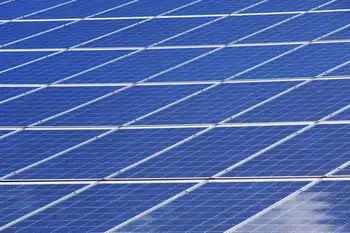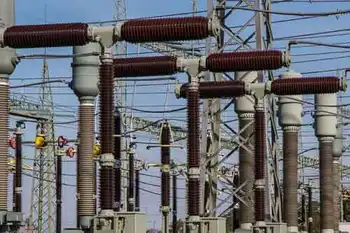Sparks fly in Mississauga utility fight
By Toronto Star
High Voltage Maintenance Training Online
Our customized live online or in‑person group training can be delivered to your staff at your location.

- Live Online
- 12 hours Instructor-led
- Group Training Available
McCallion revealed the move to reporters just before a hostile crowd in a packed school gymnasium booed and jeered an Ontario Power Authority executive trying to sell Mississauga and Oakville residents on the power-plant plan.
The mayor said documentation on the existing air pollution in the Clarkson area has been sent to Dr. Arlene King and she has agreed to investigate.
The OPA plans to build the $1-billion plant to help meet Ontario's energy demands as coal-fired power plants are phased out.
The authority wants to build the plant at one of four sites – three of them in southwest Mississauga and one in Oakville – and plans to choose the winning bidder at the end of this month.
But Mississauga, Oakville and citizen groups insist the area is already too polluted from industrial and other sources to accommodate a major natural gas plant.
Asked what she thought the medical health officer can do, McCallion said she's not sure but hopes that the findings will lend weight to the city's position and prompt Premier Dalton McGuinty to kill the project.
"We're not prepared to gamble with the health of our citizens," McCallion said.
Energy Minister George Smitherman and Environment Minister John Gerretsen were invited to the public meeting of more than 200 people at Iona Catholic Secondary School in Mississauga but didn't show up. Instead, the power authority sent its communications vice-president Ben Chin to face the hostile crowd.
Chin said the power is needed in the southwest GTA and dismissed suggestions from angry residents that retrofitting the Nanticoke coal-fired plant is a feasible alternative. He pledged that the OPA will work with existing industries to reduce the air pollution load as a trade-off for the additional pollution from the gas plant.
Oakville Mayor Rob Burton has floated a plan to support the project if two units of pollution are cut for every one unit of new pollution from the power plant. But Oakville and Mississauga residents are solidly against that plan.
Dorothy Tomiuk, a spokeswoman for MIRANET, a coalition of 25 citizens' groups, rejected that idea before the meeting, saying: "We will only accept reduced emissions in this already stressed (area)."
She added: "There are about 57 industries in the area and even if you closed all of them you couldn't do the 2-for-1 trade because so much of the pollution is from other sources such as highway traffic, air traffic and cross-border.
"It's preposterous. It defies the laws of mathematics and physics."
Even if the existing industries get a grant to cut their emissions they could expect additional costs, she said. So why would they do it if they are already complying with environmental laws?
Residents of areas that will be affected in Mississauga and Oakville have gathered petitions with 17,000 signatures, papered their neighbourhoods with "no power plant" signs, held numerous public meetings and pressured city councils to oppose the power plant.











